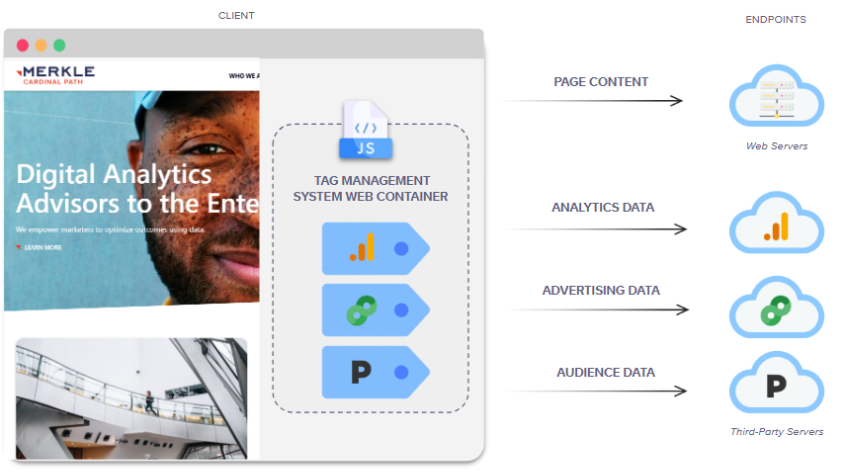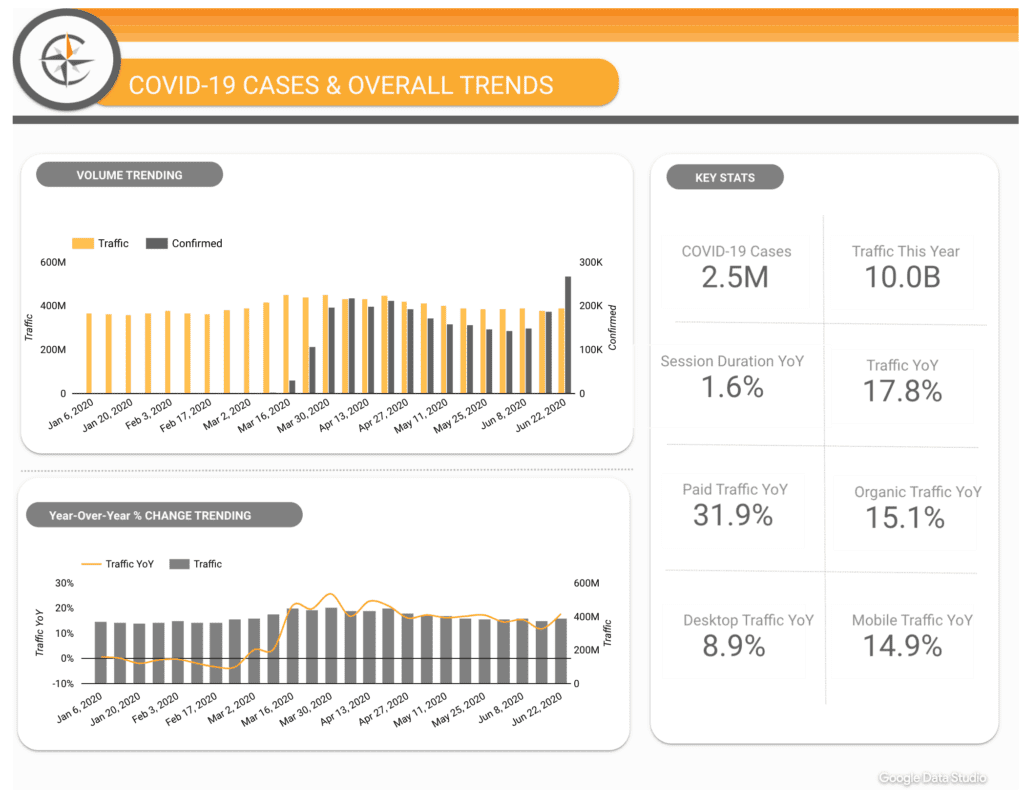If you’ve heard discussions about server-side tagging but aren’t sure what it is—or whether it’s just another fleeting marketing buzzword—this guide is for you.
In this article, we’ll answer key questions for those new to this technology:
✅ What is server-side tagging?
✅ What are the key benefits?
✅ How can it impact your organization?
✅ Does it help address cookie deprecation challenges?
✅ What are the next steps for implementation?
What is server side tagging?
In a traditional tag management setup, you install JavaScript code known as “tags” and send it directly to your web tag manager. Once installed, the vendor code collects data for their platform. The tags installed could include analytics, advertising, social, or audience pixels.

In a server-side tagging setup, tags are relocated to the server container. The web container remains installed but supplies a single data feed to the server container. The tag installed on the web container is called the “collection” tag for the server container.

Key Benefits of Server-Side Tagging
1. Enhanced Data Control
Server-side tagging gives you full control over what data is shared with third-party vendors, ensuring better compliance with privacy regulations. You decide what data is collected, eliminating unwanted tracking and improving governance. This is crucial for industries with strict data regulations.
2. Improved Website Performance
By shifting tracking scripts from the web container to the server, pages load faster, improving user experience—especially for mobile users with slower connections. Over time, as more tags are migrated, the performance benefits become more significant.
3. Better Data Accuracy & Attribution
Browsers and operating systems now block third-party tracking, leading to signal loss in analytics. Server-side tagging helps mitigate this by using a custom domain, reducing tracking disruptions and improving cookie expiration. It also allows PII-based data matching (e.g., email, phone numbers) for better attribution, like Meta’s Conversion API (CAPI).
Is Server-Side Tagging Right for Your Business?
Consider implementing server-side tagging if:
✅ You operate in a regulated industry or region with strict data privacy laws.
✅ You need more control over data collection and third-party access.
✅ Your website performance suffers due to excessive tracking scripts.
✅ You struggle with attribution loss in digital advertising.
✅ You are deploying a Customer Data Platform (CDP).
✅ Your organization enforces strict Content Security Policies (CSP).
⚠️ Important Note: Some tracking features may not work server-side, especially those relying on cross-domain cookies. As third-party cookies phase out, server-side solutions can help bridge the gap, but they won’t fully replace all existing tracking methods.
Implementation Roadmap
📌 Phase 1: Readiness & Requirements
🔹 Identify use cases, compliance needs, and internal stakeholders (IT, Marketing, Privacy teams).
🔹 Conduct a readiness audit to determine business needs and vendor options.
📌 Phase 2: Vendor Selection
🔹 Compare server-side tagging providers based on business requirements, compliance, and features.
🔹 Create an inventory of existing tags, their purpose, and necessary data points.
📌 Phase 3: Planning & Architecture
🔹 Define which tags will be migrated and establish a data governance plan.
🔹 Plan server hosting—self-hosted or vendor-managed? US-based or international servers?
🔹 Align technical resources for potential web container modifications.
📌 Phase 4: Tag Configuration & Migration
🔹 Set up the server container and configure a custom domain.
🔹 Migrate tracking tags from web to server and test integrations.
🔹 Work with developers if web tag manager replacement is required.
Final Thoughts
With evolving privacy regulations, server-side tagging is a future-proof solution for better data control, performance, and accuracy. While not mandatory yet, preparing now can prevent rushed implementations later.
Need expert guidance? Cardinal Path can help with vendor selection, planning, and setup. Contact us today to get started!
Author

Bill is a seasoned expert in tag management and analytics implementations, bringing extensive experience across multiple platforms. His expertise spans Adobe Analytics, Adobe Target, Amplitude, Google Analytics, Tealium, Google Tag Manager, and server-side technology. As a Director on the Technical Implementation team, Bill plays a key role in optimizing digital tracking strategies, ensuring seamless data collection, and driving business insights through advanced analytics solutions.
View all posts


















